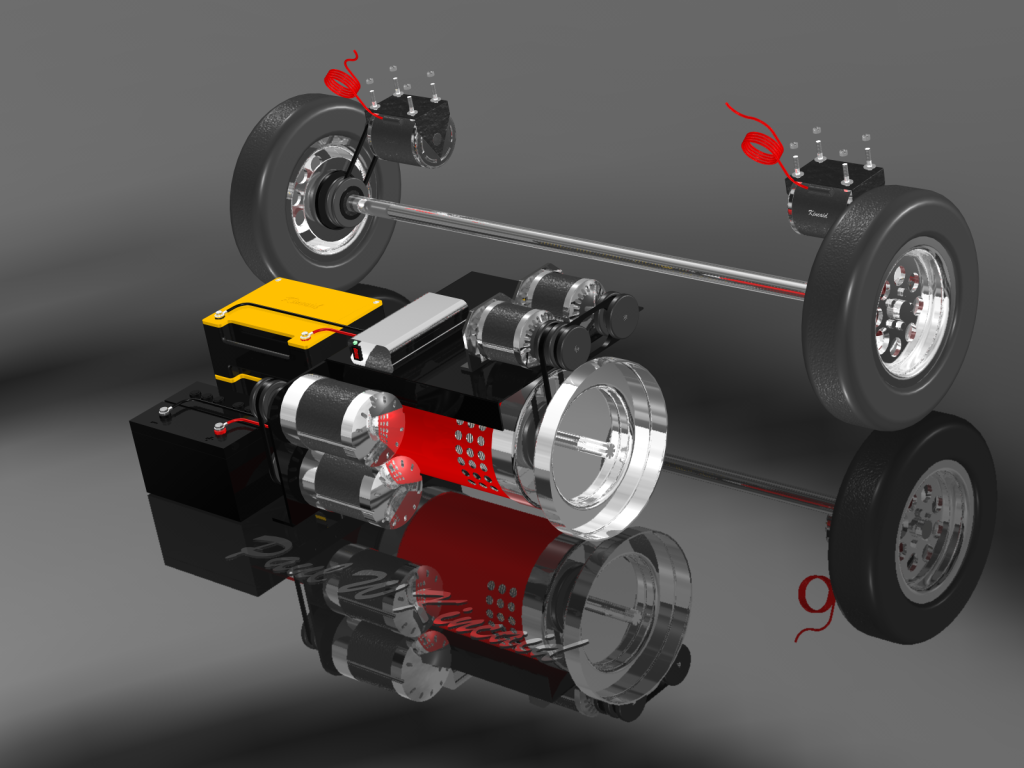Novel EV power system design by Paul W Kincaid of Moncton NB Canada. Concept designed to eliminate EV’s very costly battery packs by generating energy while the vehicle is driven. No need to recharge EVs. Utilizes existing mass produced automotive & energy generating technology.
EVs don’t need thousands of lithium ion batteries. Nikola Tesla proved in the 1930s that electric cars can be powered & driven long distances using just 1 conventional car battery. A single battery was used to produce kVs of energy to power a 80 HP AC electric motor up to 90 mph.
Every US and Canadian automaker & every auto mechanic knows how Nikola Tesla used 1 car battery to produces kVs of power. Nikola Tesla used an ignition coil. An ignition coil’s primary function is to continuously transform the 12 volts of just 1 car battery into 30-40,000 volts (30-40 kVs).
An ignition coil is a vital component of a vehicle’s ignition system. It is responsible for converting the low voltage from a car battery into the high voltage needed to produce sparks at the spark plugs. The ignition coil acts as a transformer, utilizing electromagnetic induction to generate the high voltage required for efficient combustion in the engine. Ignition coils have been used for over a century to power gas combustion engine vehicles. The Model T Ford had them. Each Model T Ford was powered using four coils, one per cylinder.
1 battery & several alternators attached to the EV’s electric motor & rear axle can also produce the kVs of energy needed to power an EV. Alternators have been used for over a century to recharge an car battery while the car is driven. Alternators can be used today to charge an EV’s battery while they are driven and they can also power the EV’s electric motor.
If the EV requires more power don’t add bulky and very expensive battery packs. Add more alternators or generator motors. Connect the alternators and/or generators to the EV’s electric motor or rear axle via surpentine belts.

